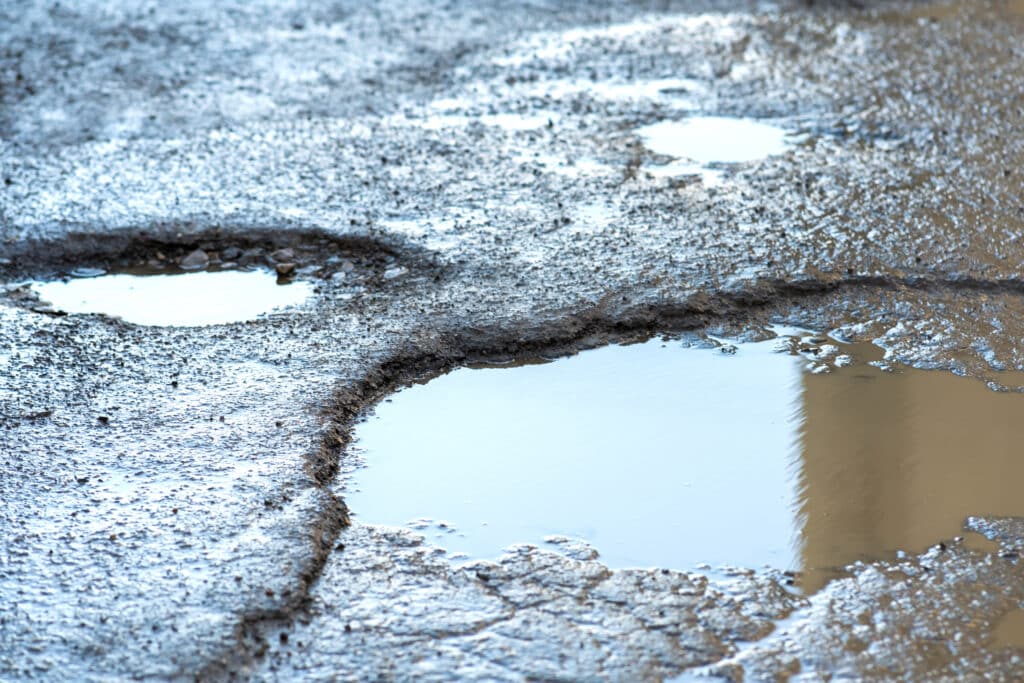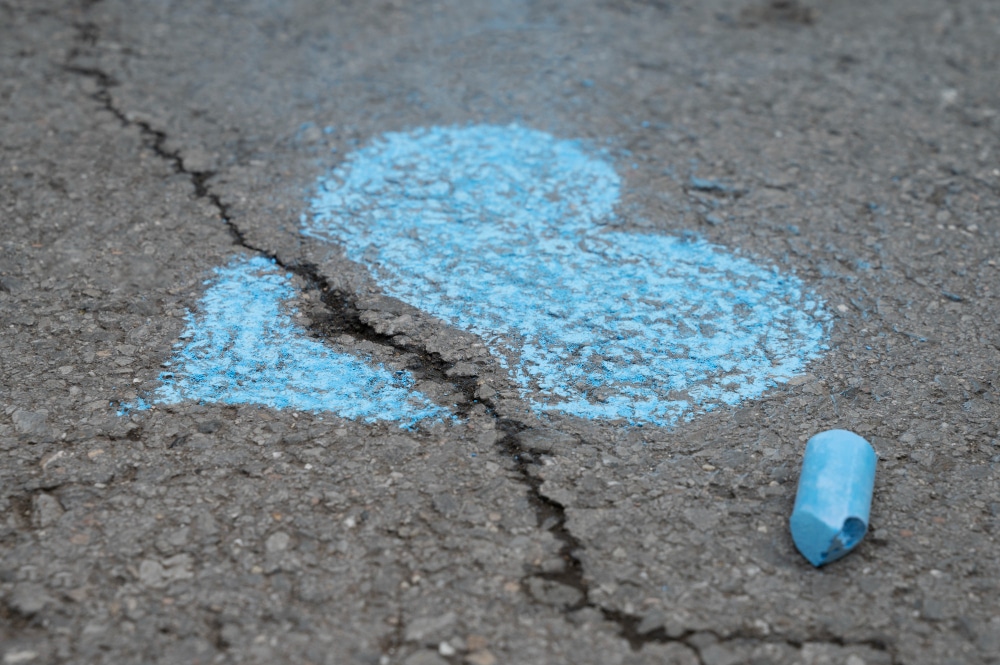Bad roads are a significant concern for drivers, cyclists, and pedestrians alike. In Ontario, the conditions of our roads can vary dramatically, especially during the harsh winter months. Unfortunately, poor road conditions can lead to severe accidents and injuries. As personal injury lawyers, we have seen firsthand the devastating impact that bad roads can have on individuals and families. This blog aims to shed light on the various hazards associated with bad roads and what you can do if you find yourself a victim of such circumstances.

Close up of a road in very bad condition with big potholes full of dirty rain water pools.
Potholes are one of the most common issues on poorly maintained roads. These depressions can cause significant damage to vehicles, leading to costly repairs. More critically, hitting a pothole at high speed can result in a loss of vehicle control, leading to accidents and serious injuries.
Cracks and uneven road surfaces can be hazardous, particularly for motorcyclists and cyclists. These irregularities can cause a loss of balance and control, leading to crashes. For vehicles, these conditions can lead to tire blowouts or misalignment.
Inadequate drainage can cause water to pool on the road surface, increasing the risk of hydroplaning. Hydroplaning occurs when a layer of water separates the tires from the road, causing a loss of traction and control.
Clear road markings are essential for safe driving, especially at night or during adverse weather conditions. Faded or missing road markings can cause confusion and lead to accidents, particularly at intersections and pedestrian crossings.
Debris, such as rocks, branches, or litter, can create dangerous obstacles on the road. Loose gravel, often found on rural or construction roads, can significantly reduce tire traction, leading to skids and accidents.

For drivers, bad roads can lead to a variety of accidents, ranging from minor fender benders to serious collisions. The cost of repairs, medical bills, and potential loss of income can be overwhelming.
Cyclists and motorcyclists are particularly vulnerable to the hazards of bad roads. The lack of a protective barrier means that any accident can result in severe injuries or fatalities. The risk is even higher on roads with heavy traffic, where avoiding obstacles may not always be possible.
Pedestrians are not immune to the dangers of bad roads. Uneven pavements, poorly marked crosswalks, and road debris can lead to trips and falls, sometimes resulting in serious injuries. In areas with inadequate street lighting, these hazards are exacerbated, increasing the likelihood of accidents.

In Ontario, municipalities and other governing bodies are responsible for maintaining safe road conditions. When they fail to do so, they may be held liable for accidents and injuries that occur as a result. However, proving negligence can be complex and requires a thorough understanding of the law.
Municipalities should conduct regular road maintenance to identify and repair issues promptly. This includes filling potholes, fixing cracks, and ensuring proper drainage.
Proper signage can warn drivers of potential hazards ahead, allowing them to take necessary precautions. Temporary signs should be used in construction zones or areas where road conditions are particularly poor.
Educating the public about the dangers of bad roads and encouraging them to report issues can lead to quicker resolutions and safer roads for everyone.
Bad roads pose significant risks to all road users. By understanding these hazards and knowing your rights, you can take steps to protect yourself and seek justice if you are harmed by poor road conditions. At Bergeron Clifford LLP we are dedicated to helping victims of road-related accidents get the compensation they deserve. If you have been injured due to bad roads, contact us for a free consultation.
